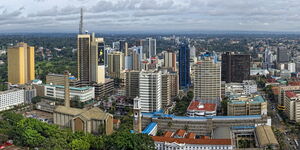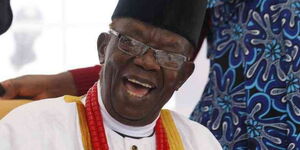Energy Cabinet Secretary Opiyo Wandayi has announced that the government will soon unveil a new electricity distribution blueprint to address rising cases of unlawful power connections in densely populated residential areas.
Speaking during a breakfast show on Spice FM, Wandayi explained that the blueprint will introduce a bulk metering and billing system, allowing a single individual or entity to purchase electricity from Kenya Power and Light Company (KPLC) and then redistribute it to other consumers in a designated area.
“This is in response to the unlawful connections, especially in built-up areas and neighbourhoods with high population intensity. We have had challenges controlling this menace due to security concerns,” said Wandayi.
He added that the bulk billing system will help streamline electricity access in areas where enforcing direct KPLC connections has been problematic due to congestion and security risks.
"We are coming up with a solution called bulk metering, where ordinarily in estates where it would be difficult enforcing compliance by KPLC personnel, we plan to implement bulk metering," he stated.
The proposed model will require residents of a building, estate, or settlement to agree on a single person or legally registered entity to act as their power supplier, effectively becoming the official contact point with KPLC.
“The populations will agree on one person or one entity to be the point of contact with Kenya Power, and therefore KPLC bills that entity, that will then supply power to households and thereby collect revenue on our behalf,” Wandayi elaborated.
He cited examples from other countries where similar models have worked effectively, noting that the Kenyan government is now focused on implementing the system as a long-term solution.
The approach is also expected to curb frequent power disconnections caused by unlawful tapping and overloaded connections, thereby ensuring a more reliable electricity supply in informal settlements and high-density neighbourhoods.
Additionally, the Energy CS pointed out that this model will improve safety, particularly in fire-prone areas where incidents have been linked to unregulated power connections.
The move marks a shift in the government’s strategy from enforcement-led crackdowns to community-based compliance, facilitated through licensed intermediaries.
Wandayi assured Kenyans that once the blueprint is rolled out, KPLC and the Ministry of Energy will work closely with local authorities and community leaders to sensitise residents and implement the model efficiently. He stressed that this system will not only ensure sustainable revenue collection for KPLC but also reduce power-related mishaps and outages, especially in urban informal settlements.
How it Will Work
Under the proposed bulk metering system, Kenya Power will install one main electricity meter for an entire estate, apartment block, or residential cluster. This meter will serve as the official billing point, meaning KPLC will only deal with a single customer, either a designated individual or a registered entity acting on behalf of the residents.
Within the estate or building, sub-meters will be installed for each household to track individual consumption. The bulk account holder will use these sub-meter readings to calculate the amount each household owes and will be responsible for collecting the payments. Kenya Power will then receive one consolidated payment from the account holder, streamlining revenue collection and eliminating the need to engage each consumer directly.












